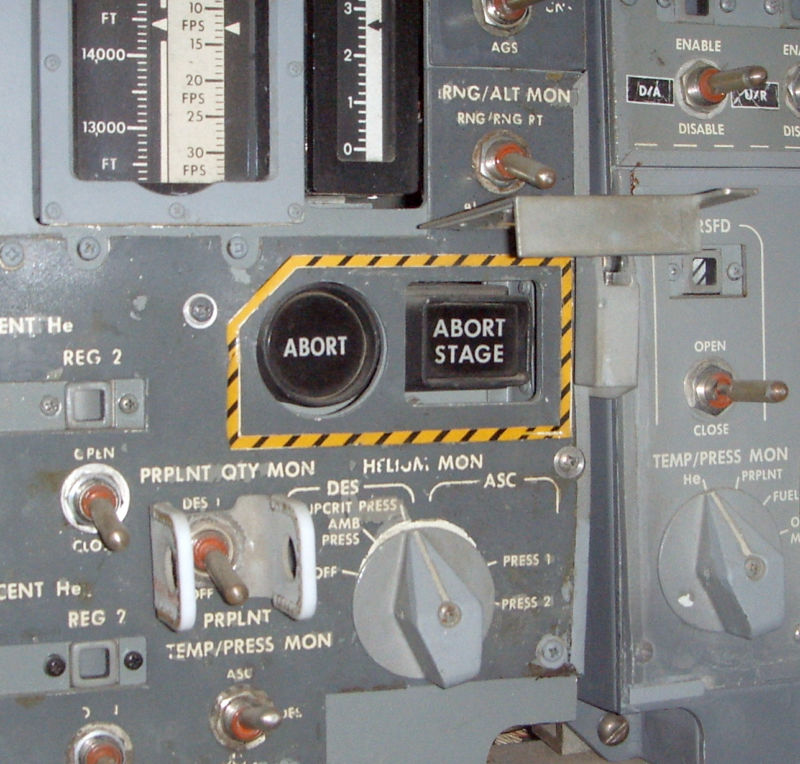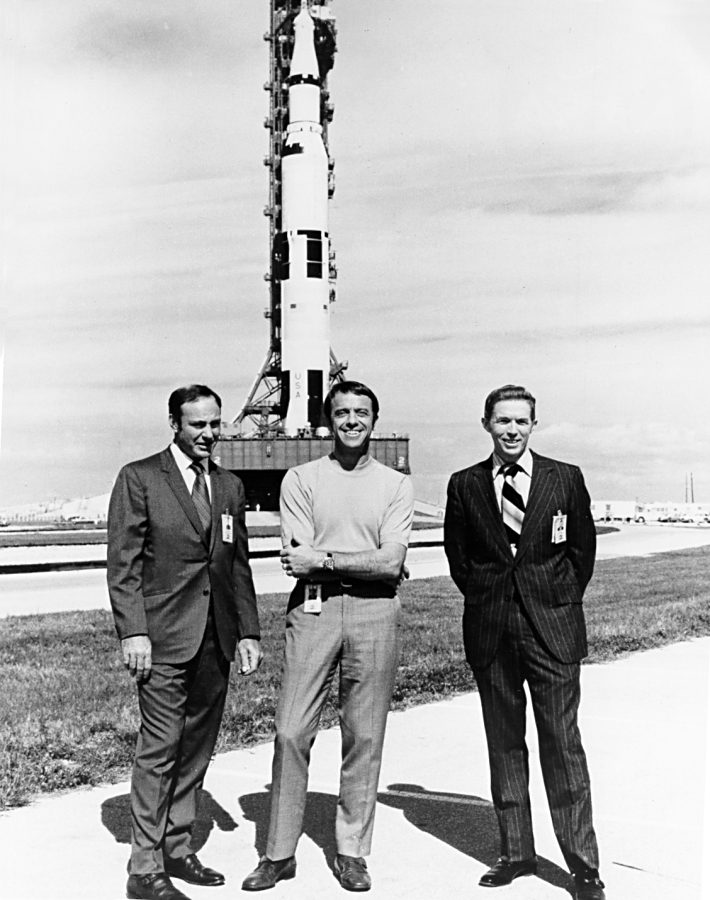
Enlarge / The source of all the trouble: the Abort pushbutton (along with its companion the Abort Stage pushbutton). This particular image is of the LM simulator currently residing at the Cradle of Aviation Museum in Long Island. (credit: Frank O'Brien)
Commanded by Alan Shepard, the only original Mercury astronaut to make it to the Moon on an Apollo mission, Apollo 14 was a reflight of Apollo 13's abandoned lunar landing plan. Accompanied by Lunar Module Pilot Ed Mitchell and Command Module Pilot Stu Roosa, Shepard's target was the Fra Mauro highlands, a hilly area near the lunar equator and just south of the giant crater Copernicus. Likely created from the ejecta thrown out when Mare Imbrium was created, the Fra Mauro site was thought to potentially contain material from deep inside the Moon that could shed light on our companion satellite's origin.
In the eight months since the harrowing flight of Apollo 13, engineers made several changes to the spacecraft to reduce the chance of another explosion happening. To help ensure that the crew could make it home if another emergency occurred, an additional oxygen tank and battery were added. The unplanned pause also allowed time for some software updates to be added to the lunar module computer; a particularly welcome addition was the ability of the computer to recognize changes in the height of the surface during the approach to the landing site. With this new capability, the computer would not be confused by the undulating terrain as the vehicle headed toward landing.
-

The crew of Apollo 14 during their Saturn V roll-out on January 11, 1971. From left to right are Lunar Module Pilot Ed Mitchell, Commander Al Shepard, and Command Module Pilot Stu Roosa. [credit: NASA / ALSJ ]
What is past is prologue
In the afternoon of January 31, 1971, the flight thundered away from the Kennedy Space Center on its Saturn V launch vehicle after only a brief 40 minute hold for weather. After restarting the S-IVB third stage for trans-lunar injection (TLI), the command module Kitty Hawk and her crew were on their way to the Moon.
No comments:
Post a Comment